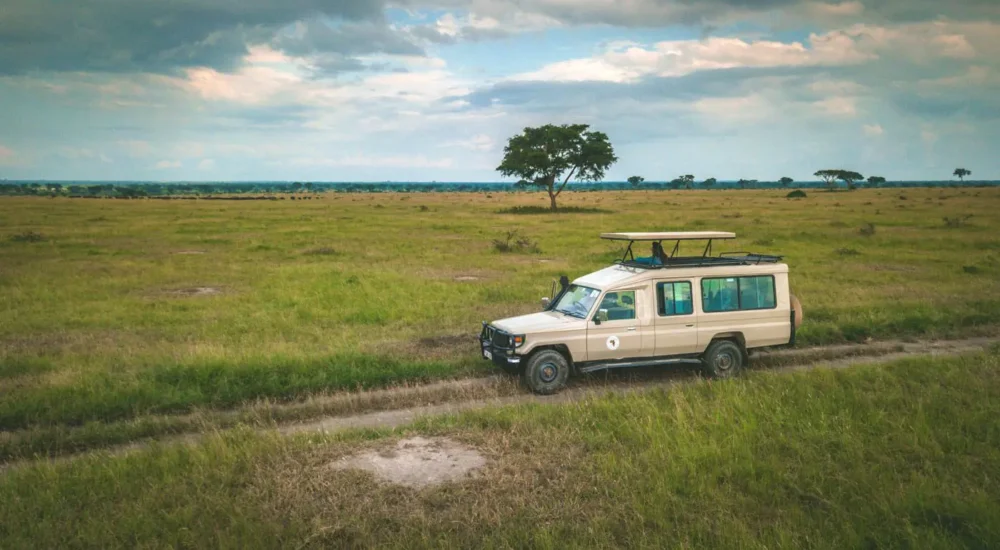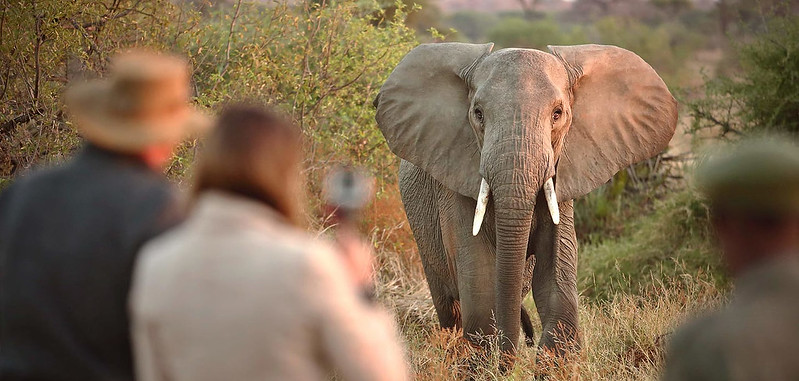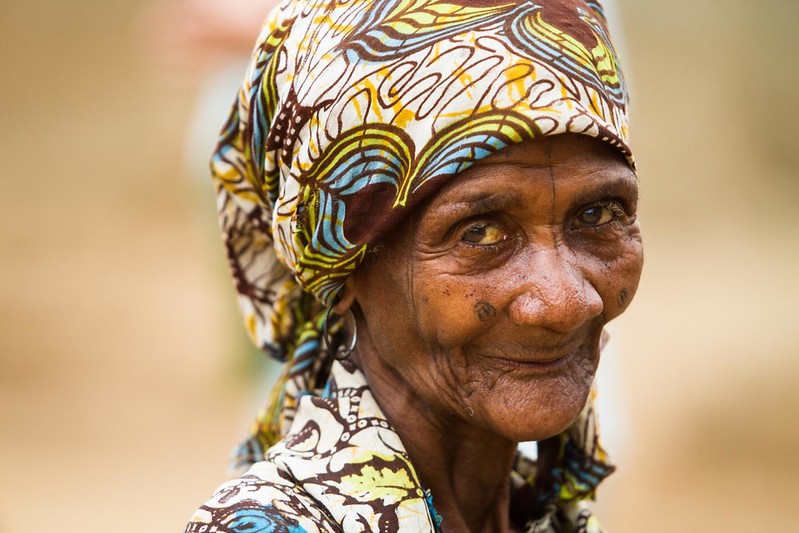Uganda’s Climate: Understanding the Seasons Tropical Climate Overview: Uganda has a tropical climate, characterized by…
Semuliki National park travel guide
Semuliki National park travel guide – Top thing to do.
Located in Bwamba County, a secluded section of the Bundibugyo District in Western Region, Uganda, Semuliki National Park is the subject of this travel guide. It is one of the most recent national parks in Uganda, having been designated as one in October 1993. Including a total of 219 square kilometers (85 square miles). Not only that, but it is unique among East African lowland tropical rain forests.
Semuliki National Park: A Historical Account
With a total size of 220 square kilometers, Semliki National Park was gazetted in 1993. Huge tropical lowland forests, the Sempaya hot springs, the Semliki River, and the enchanted Mountains of the Moon are the features of this park, which is located in the world-renowned Congo basin.
In addition to more than 400 bird species, some of which are common in forests, the area is home to more than 200 animal species, including various primates like chimpanzees and monkeys. Birdwatchers now consider this national park their second home due to the abundance of West African species, such as the Congo serpent eagle, and the high biodiversity it contains.
Nestled on the secluded western slope of the Rwenzori Mountain, Semuliki National Park occupies the valley bottom. The Congo basin’s Ituri forest forms the park’s boundary. One of the most old and biologically diversified forests in Africa, this one made it through the last ice age some 18,000 years ago. A one-of-a-kind Ugandan attraction, the Semuliki valley is characterized by several characteristics more typical of central Africa than East Africa.
The semuliki, a kind of West African palm oil, provides shade for thatched houses and serves as a border marker with Congo, a smaller river that is conceptually identical to the Congo River. Because of the Batwa pygmy society, which originated in the Ituri region, and the abundance of central African animals in the area, Seliki National Park offers a unique opportunity to experience central African culture in Uganda.
Wildlife of semuliki National park.
Of the 53 mammal species found in the forest, 27 are big mammals. Eleven of these species, including the pygmy antelope and two fly squirrels, are indigenous to the park.The fanged deer also call this place home. In addition to the larger savannah buffalo, the park is inhabited by smaller woodland buffalo and elephants.![]()
Chimpanzees, baboons, grey-checked Mangabeys, blue monkeys, red-tailed monkeys, de-braza’s monkeys, Vervet monkeys, dent’s Mona monkeys, nocturnal primates like potto and bush babies, and a plethora of other primate species call the forest home. Semuliki River is home to crocodiles and hippos, two of the largest semi-aquatic species on Earth.
Birds of Semuliki National Park.
The 441 bird species documented in semuliki make up 40% of Uganda’s total bird species and 66% of the forest bird species in the nation. The birdlife in this area is remarkable. The grassland and riverine habitats to the east of the park add to the list. A large number of rare birds may be discovered in the park, including 46 species unique to the Guinea-Congo biome and 35 species that are only found in three birding locations in Uganda.
A total of five bird species—the Nkulengu Rail, the Yellow-Throated cuckoo, the piping hornbill, the Red-billed dwarf hornbill, the Black dwarf hornbill, the White-crested hornbill, and the Black-casqued wattled hornbill—are native to the Albertine Rift.
Swamp palm bulbul, Black-rumped tinkerbird, African piculet, Yellow-throated nictor, Leaf-love, and White-Throated Blue swallow The following species are found in this area: orange-checked waxbill, chestnut-breasted negrofinch, red-bellied waxbill, crested waxbill, and maxwell’s black weaver.
Activities at Semuliki National park.
Bird watching
In Semuliki National Park, visitors may see a wide variety of intriguing woodland and swamp birds. The Swamp Palm Bulbul and the rare shoebill stork are two of the most prominent bird species in this park, and you may find them mostly around Lake Albert. Black dwarf hornbills, African piculets, chestnut-breasted negrofinch, blue-billed malimbe, maxwell’s black weaver, and lemon-bellied crombec are among the others.
Red-bellied Malimbe, Nkulengu Rail, White-crested Hornbill, Black-casqued Wattled Hornbill, Piping hornbill, Leaf-love, Crested Malimbe, the Ross’ Turaco, Orange-cheeked Waxbill, and Yellow-throated Nicator are some of the birds commonly seen in the Ntandi and Sempaya areas. In addition to the places already listed, the Kirumia River is a great place to go birdwatching.
Enjoying the great outdoors on foot
An additional must-do for visitors to Semuliki National Park is a nature walk, which provides an opportunity to see avian and butterfly species not seen on game drives. Primates, hippos, crocodiles, birds, and butterflies are just some of the creatures that visitors may see during nature excursions in this park.
The 9-kilometer Sempaya Nature trail, the 11-kilometer Red-monkey track that runs along the park’s eastern edge, and the 13-kilometer Kirumia Hiking trail that goes through the forest’s heart and ends at the Semuliki River are the three primary hiking routes in the park.
Exchanges between cultures
While there are several indigenous communities in the area around Semuliki National Park, the most fascinating cultural experience is likely to be interacting with the Batwa people who live in the forest. Before it was gazetted as a forest reserve in 1932 and later designated as a National Park in 1993, the Semliki Forest provided these hunter-gatherers with food, shelter, fuel, and medicine.
Their traditional way of life in the forest has been displaced by the rise of tourism; nonetheless, they continue to preserve and showcase their old traditions via performances of dance, music, and theater.
Going on a cultural immersion tour with the Bambuti pygmies is another exciting experience. These people live along the Semuliki River and are related to the Basu pygmies in the Democratic Republic of the Congo. However, there are others who think they are related to the Batwa people in the areas surrounding Mgahinga Gorilla National Park and Bwindi Impenetrable National Park.
Even fewer in number than the Batwa Pygmies, this tribe is known for its unique customs, which include the cultivation and use of marijuana. Like the Batwa Pygmies, the Bambuti Pygmies were hunter-gatherers who were forcibly removed from their traditional habitats.
See the Sempaya hot springs at your leisure
This is the park’s most popular attraction, and each visitor to Semuliki National Park should make time to partake. Two hot springs can be found here: Bitende, a male spring with a diameter of about 12 meters, and Nyasimbi, a female spring that is a boiling geyser that shoots steam and hot water 2 meters into the air.
Boiling water at 100 degrees Celsius may be achieved in about 5 to 10 minutes, and the same goes for eggs. Tourists are more interested in the cultural and mythological tales that surround the feature than in its scientific development. You may learn fascinating things about the local culture by visiting these hot springs; the area is also home to a variety of animals, including primates and birds.
Methods for reaching Seliki National Park
Two roads go to Semuliki National Park in the Budibugyo region in the southwestern corner of Uganda; both routes are best taken in a four-wheel-drive vehicle, particularly if you’re traveling from Kampala, the city of Uganda;
One route goes from Kampala to the fort portal via Masaka, Mbarara, and Kasese. The lengthier route, spanning around 465 km and taking 7 or 8 hours to arrive, offers the opportunity to stop at many locations along the way, including Queen Elizabeth National Park and Lake Mburo National Park, among others.
The second, shorter route goes from Kampala to the Fort Portal via Mubende and takes about four to five hours to travel the 180 kilometers.
Located in Bundibugyo, the park is about 59 kilometers from Fortportal. The journey to the Sempaya Gate, along the rather uneven route, may take anywhere from two to three hours.
Although there is plenty to see along the journey, such as the many Rwenzori mountains and the picturesque Albertine Rift valley bottom, getting to the park during the wet season may be challenging due to poor roads, particularly in the hilly regions. However, work is underway to enlarge the route in order to speed up transportation.
Semuliki National Park: Where to Stay
Located in the isolated Bundibugyo area, Semliki Forest National Park is on the far western edge of Uganda. Outside of the rudimentary Bandas at Bumaga run by the Uganda Wildlife Authority, there aren’t many places to stay within the national park.
Areas of camping and UWA Bandas
Situated near Bumaga, the UWA Bandas and Campsites are around 3 kilometers away from Sempaya. Sempaya is the starting point for many adventures in Semliki National Park, including birding, nature walks, and treks to the famous Sempaya hot springs, both male and female. If you’d want to stay at the Bandas without meals, that’s possible with request. If you want to bring your own food on your safari in this national park, you may rent some of the necessary cooking gear.
Other possible lodging options
A luxury vacation guide to Semuliki National Park It is 65 kilometers to the park from the Semliki Safari Lodge in the Toro-Semuliki game reserve.
Located in the Toro-Semliki Wildlife Reserve, next to Semliki National Park, is this magnificent luxury lodge. Built from locally obtained materials, it provides 18 guests on a safari in the park with the most comfortable accommodation while also giving them a real African rustic experience.
Guests of the Semliki Safari Lodge stay in canvas tents, which are characterized by their golden hues, shining hardwood flooring, and attached bathrooms with hot and cold showers, as well as additional amenities like as flush toilets, morning tea or coffee provided in bed, and more.
A swimming pool, a main Lodge with a grass-thatched roof, a lounge, a restaurant serving the most delectable dishes, and a well-stocked bar are just a few of the amenities to enjoy. Among the most alluring aspects of a stay at the Lodge is the opportunity to take in breathtaking views of the Democratic Republic of the Congo’s Blue Mountains.
The Ntoroko Game Lodge is located 85 kilometers from the park, on the edge of Lake Albert.
Guests of the five-star Ntoroko Game Lodge may enjoy the park’s spectacular wildlife while lounging on the pristine beaches of Lake Albert. Guests may choose from a variety of accommodation types, including conventional doubles, singles, and doubles with extra amenities.
If you are seeking a romantic getaway or a safari in complete privacy, this lodge is for you. Each room is equipped with a fan, a private bathroom, a balcony to enjoy the view of the gardens and Lake Albert, complimentary toiletries, a safe, a heater, and a hairdryer.
What is the optimal time to visit Seliki National Park?
Semuliki National Park is at its most beautiful during the dry season. December–February and June–August are the two dry seasons. The woodland routes become impassable due to flooding during the wet season (March–May and September–November). The semuliki woodland is, as you would expect, marshy.For information about Semuliki National Park and what to do when there, get in touch with Monumental Expeditions and Safaris.


